Electric heated towel rail power

Recently, water heated towel rails are in less and less demand even in apartment buildings - more and more owners prefer the energy independence of their own apartment with the ability to independently regulate the operation of the coil and the costs of its operation. If you are thinking about acquiring such equipment, you need to choose the right model in terms of power, so that it turns out to be practical and not too expensive to operate.
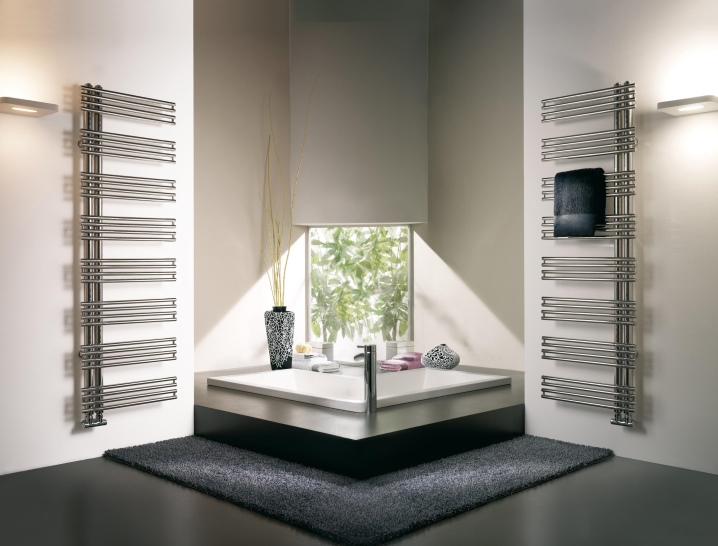
What happens?
Manufacturers reasonably assumed that the power of an electric heated towel rail should not be a universal value - each consumer solves his own problems, which means that it makes sense to release models of different power and cost. Respectively, on the modern market there is a huge run-up of electric coils in terms of power, but the task of a competent buyer is to choose not at random, but deliberately.
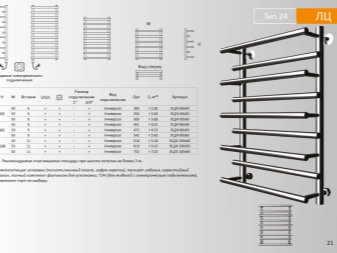

To begin with, you should understand that heated towel rails are available for different needs. The very name of such equipment contains a function that was initially considered the main one - a coil is needed in order to dry towels on it. To ensure the necessary and fast enough result, capital heating of the entire room is not needed - on the contrary, some "normal" heating of the unit surface is enough for this. The task of drying towels does not belong to the category of particularly difficult and energy-consuming, therefore the consumer can choose from a number of inexpensive models, whose power is limited to 50-150 watts.

Another thing is that a number of consumers consider a heated towel rail as the main heating device in the bathroom. Separately, we note that it is the bathroom that is the only place in an apartment or a private house where you cannot dress up so that it is not so cold, because it is in this room that you should not ignore good heating.
If the unit is forced to heat the room through a layer of towels hung on its heating elements, then the power increases even more. In any case, it is necessary to make a discount on the temperature conditions on the street, and the formulas for calculating the sufficient power are very different, but one thing is indisputable - a heated towel rail for the bathroom, which simultaneously performs the functions of a heating radiator, must be many times more powerful than its counterpart, which simply dries towels.
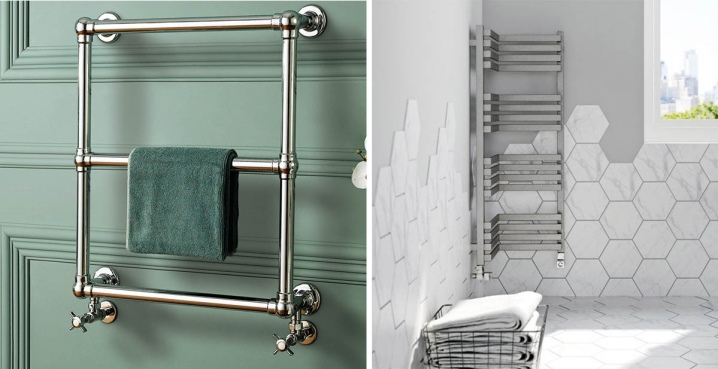
How much electricity does it consume per month?
Given the aforementioned need to install really powerful equipment, many potential consumers are beginning to doubt whether such a purchase is practical, and want to know what electricity consumption should be expected. The calculation formula exists, and it is quite simple, but first you should familiarize yourself with such an indicator as the coefficient of energy consumption.
Modern heated towel rails are not constantly heated - they work on the principle of alternating stages of the heating-cooling cycle.
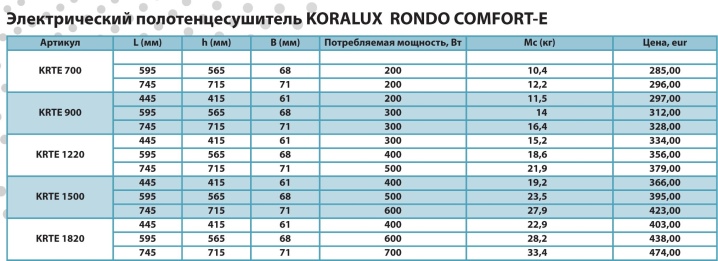
The unit, tuned to maintain a certain surface temperature, when switched on for the first time, heats up intensively until it reaches a slightly higher value, and then “rests” for a while, giving off the accumulated heat. Thanks to this, the equipment does not overheat and does not operate at the power limit, which means that it is not subject to so much wear and tear.
The energy consumption factor is very similar in meaning to the efficiency, it shows what percentage of the time the device heats up, consuming the maximum electricity. A coefficient of 0.4 is considered standard for most household heated towel rails - according to the power indicated on the box, electricity is consumed 40% of the time, that is, 24 minutes of every hour. More expensive and higher quality models may have a more practical coefficient of 0.16 - they only need to heat up 10 minutes per hour to stay warm.
Having dealt with the designated variable, we can proceed directly to the formula for calculating energy consumption. To obtain the total figure, we multiply the nominal power of the device, the coefficient considered above and the operating time during the day, because there is no point in maintaining a "tropical" temperature in the bathroom while households are sleeping or gone to work.
According to this formula, a conventional 600-watt heated towel rail operating 4 hours a day will consume 960 W per day, that is, it takes almost 29 kW per month.
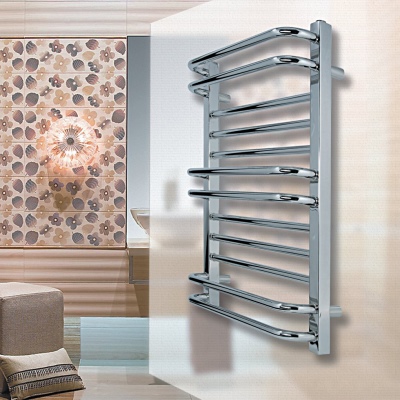
True, even here subtle mathematical nuances are possible that make adjustments: for example, an efficient ventilation will fill the bathroom with more cold air, forcing the unit to turn on more often and to work more time at its maximum capacity. Separate studies also show that equipment of higher power is more economical, because it heats the coil faster and more efficiently at the beginning of work, while maintaining the existing temperature is a priori less energy intensive.
The above formula allows you to get a rough idea of the order of the numbers, because the consumer in any case cannot accurately calculate the duration of the device in advance.

How to calculate?
An accurate calculation of the optimal power of a heated towel rail used as the main heating device for a bathroom should take into account a lot of factors, including the climatic characteristics of the region and the current outdoor temperature, heat loss coefficients of walls and glazing, ceiling height and the number of external walls of the bathroom, the ratio of the area of windows to the floor etc. For the average man in the street, each of the indicators will require a separate formula and lengthy calculations., in which half of the owners will be mistaken, and half will not see the point, completely not understanding how to calculate it.
For this reason, it is reasonable to take a simpler path, starting from abstract quantities.
There is a GOST, indicating that during the heating season, the air temperature in the bathroom should not fall below 25 degrees. - such values allow the bathing person not to risk their own health. Given this requirement, the minimum (we emphasize: the minimum) indicator of the power of a liquid heated towel rail with an electric water heater should be at least 100 W for each square meter of area.

The owners can only start from the declared minimum indicator somewhere in Sochi, because no electrical appliance should constantly work at its maximum capabilities. For central Russia, the normal power indicator will be about 140 watts per square meter. This means that the popular 300 W models are suitable for heating only a tiny separate bathroom, and even quite powerful 600 W heated towel rails are effective only on an area of 4 square meters.
The presence of low-power products in the model series should not cause skepticism from the consumer regarding our calculations. It is unacceptable to forget that some heated towel rails a priori cannot be considered as heating devices, in addition, individual owners use the unit as an auxiliary, not the main heating.
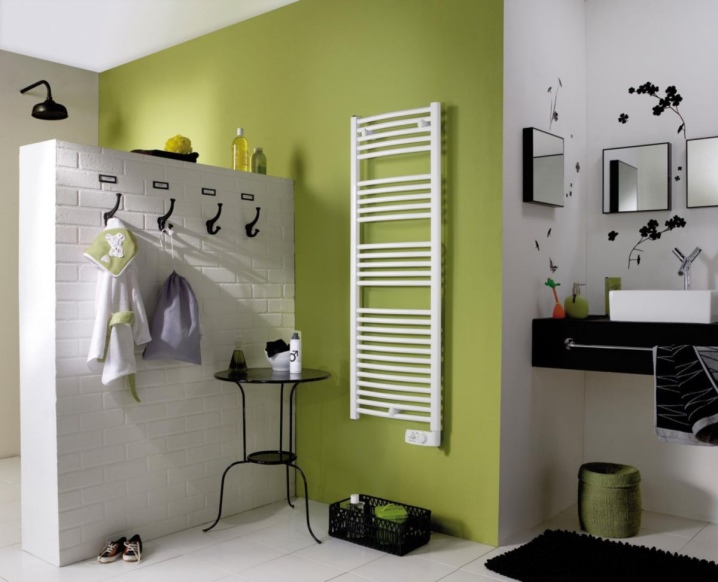
How to reduce?
Considering that a heated towel rail does not solve many useful tasks in the house, many consumers may find it a problem that it consumes too much electricity. "Reducing" the power consumption of the unit should be at the stage of purchase, and for this it is necessary to pay attention to the specific characteristics of individual models - the avaricious pays twice, therefore, you should not save on technologies.
- Thermostat with temperature sensor. Allows you to more effectively respond to the current weather changes outside the window - there is no need to drive the heated towel rail to the full if there is a sharp warming on the street. Thanks to the sensor and thermostat, the programmable unit "learns" itself to adapt to the surrounding conditions. However, such a unit is a priori found only in liquid models - cable coils above 60 degrees do not heat up, therefore, such parts are always deprived.
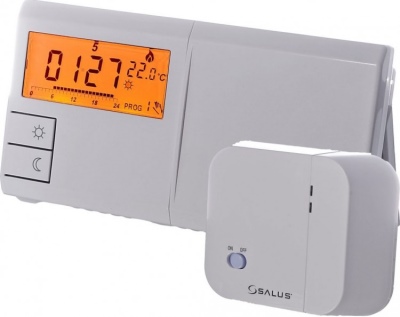
- Timer. An optimal addition for a heated towel rail if the owners are not at home most of the time, and their life schedule is stable and predictable for many weeks in advance. Having programmed the timer of the heated towel rail to turn on and off, you will know for sure that the unit does not work, does not consume energy at all, until it is necessary. It will turn on, say, half an hour before you arrive from work and wake up, and turn off immediately after leaving for work and lights out.
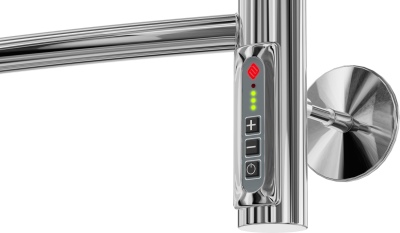
- Low power consumption. This is exactly the coefficient of energy consumption, which was discussed above. Properly designed energy saving equipment allows it to quickly heat up and turn off power consumption, giving off heat gradually and for a long time. Maintaining the temperature is much more economical than primary heating, because a powerful unit with a coefficient of 0.16 is the optimal solution for the home.
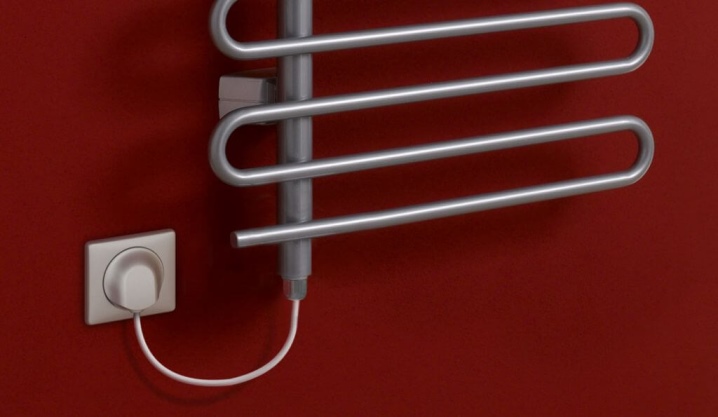













The comment was sent successfully.